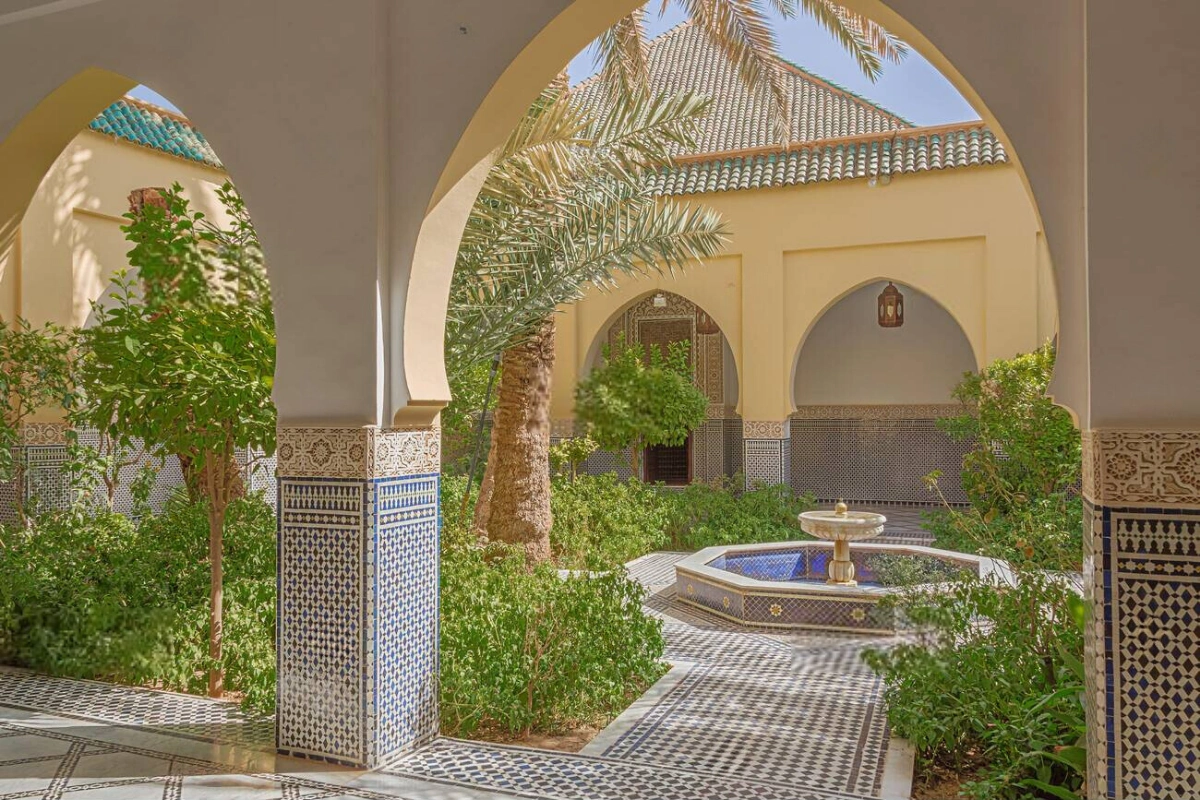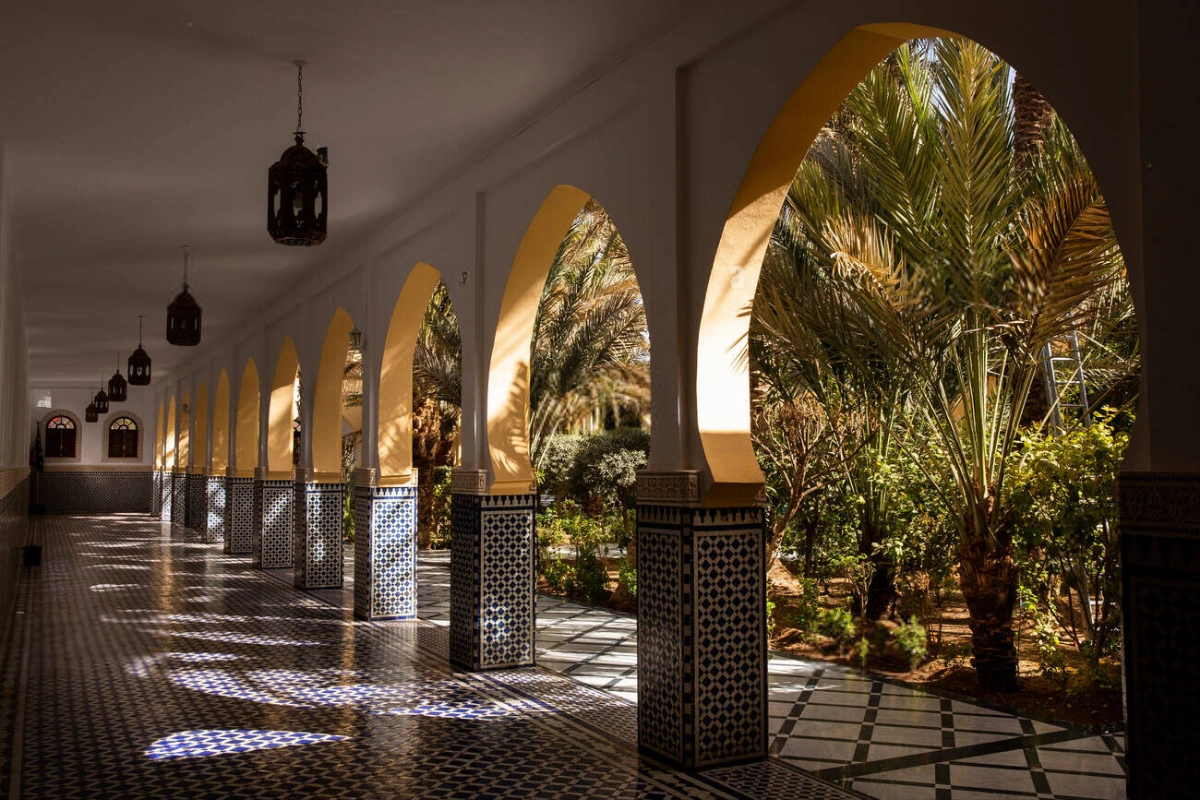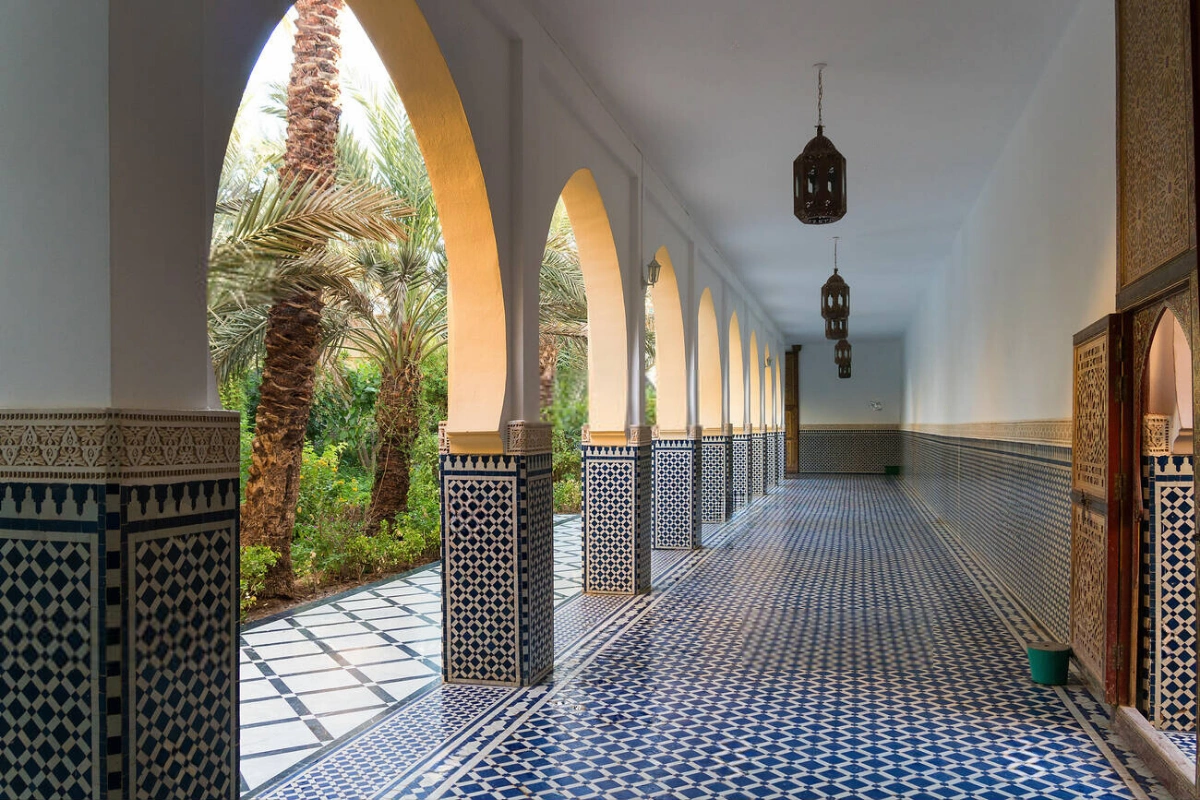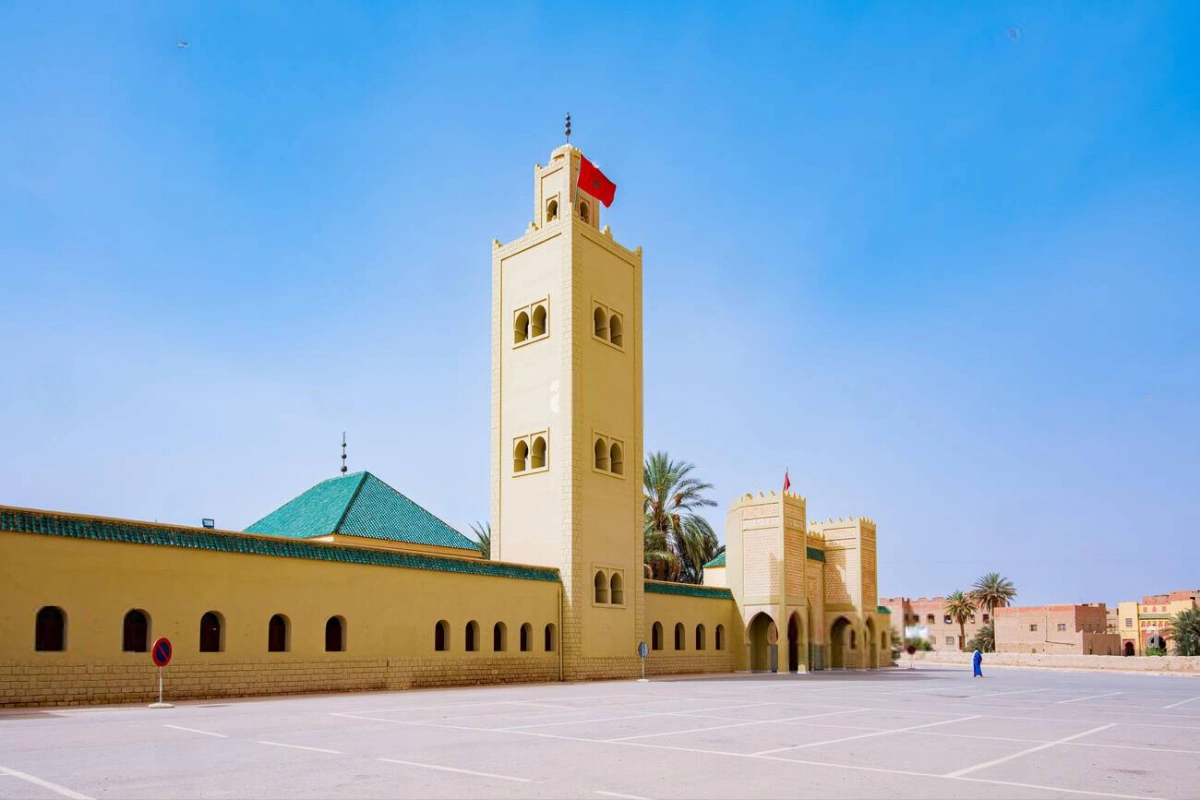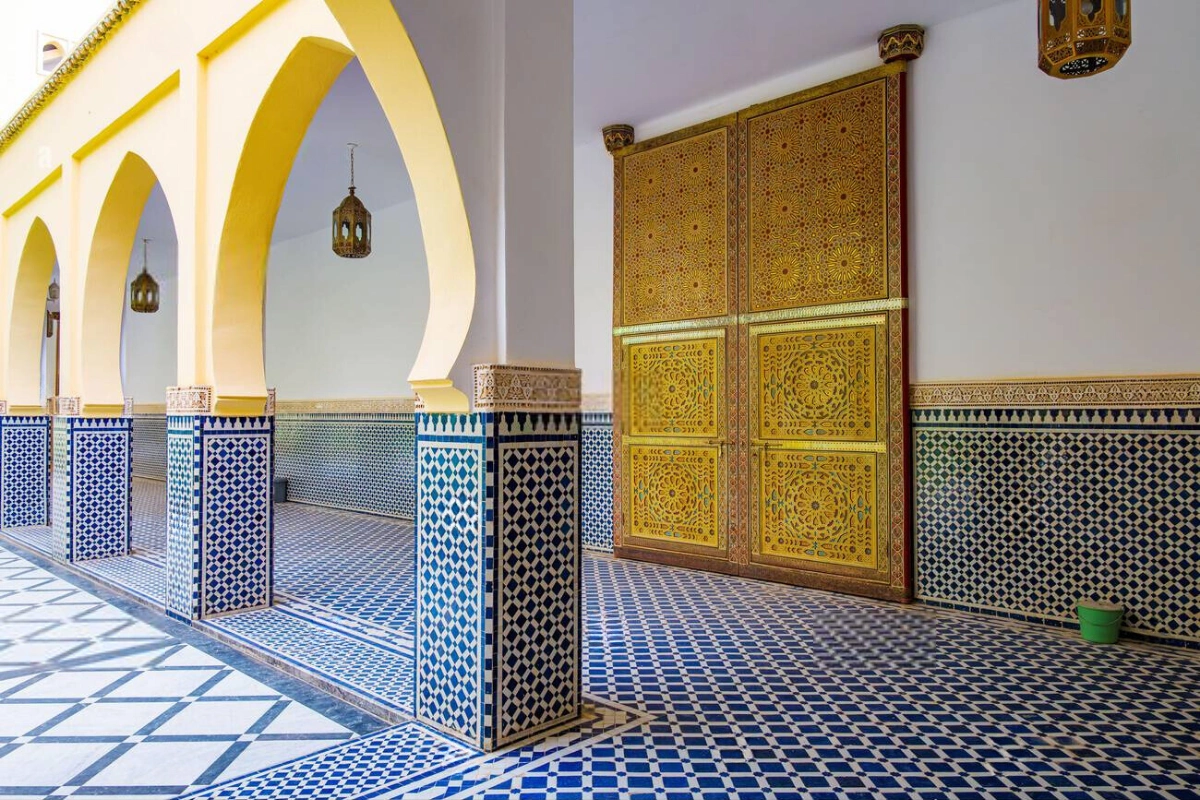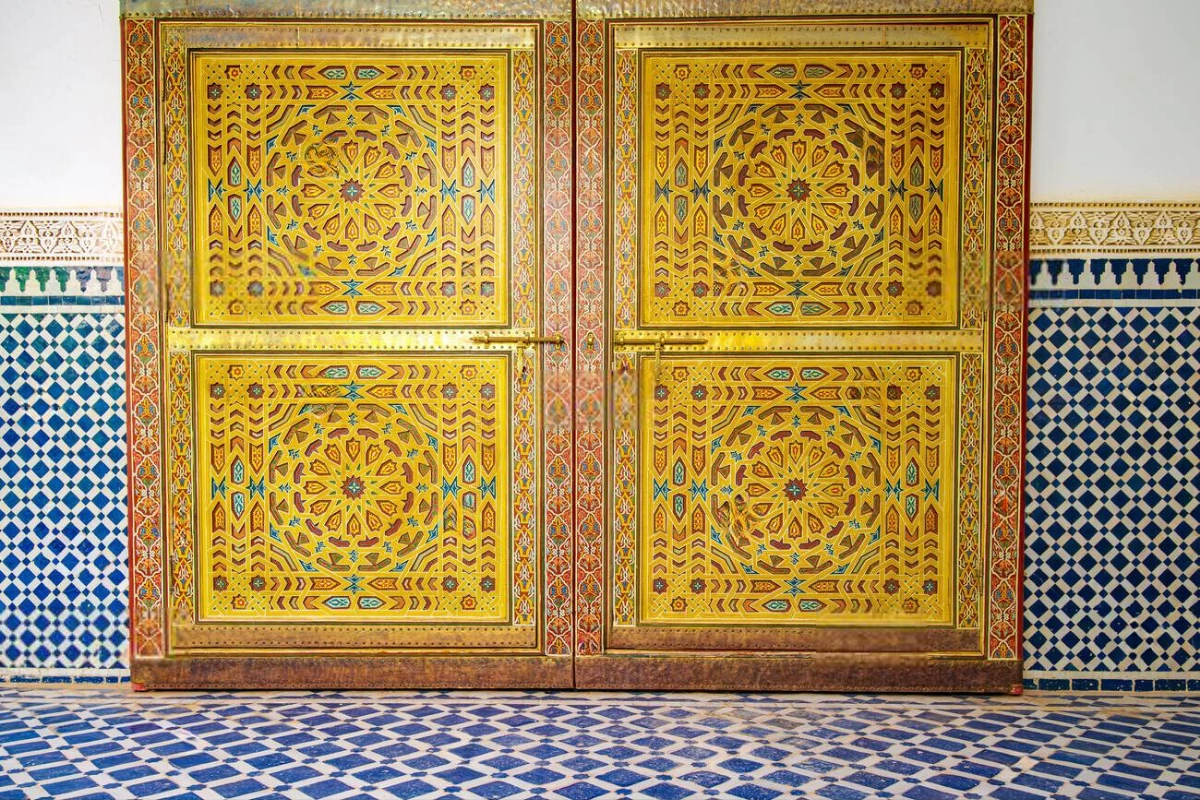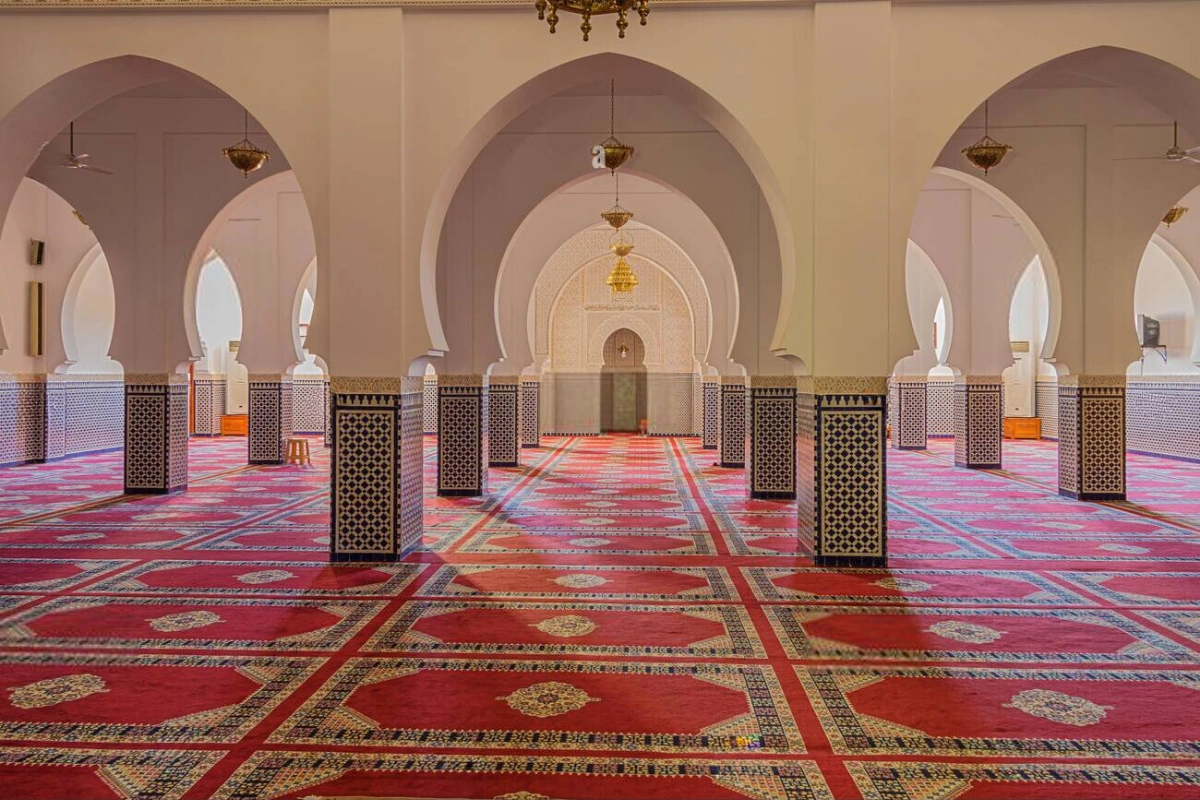Built in the 17th century and expanded over subsequent generations, the mausoleum complex showcases the finest elements of Moroccan religious architecture. Its design features intricate geometric tilework (zellij), carved cedar wood ceilings, elegant archways, and detailed calligraphy that exemplifies the heights of Islamic decorative arts. The central courtyard, with its serene atmosphere and traditional ablution fountains, provides a peaceful haven away from the bustling streets of Rissani.
What makes this mausoleum particularly special is its continued significance as an active spiritual center. It serves not only as a historical monument but also as a place of pilgrimage for many Moroccans who come to pay their respects to their ancestral leader. The site maintains a unique atmosphere where history, spirituality, and royal heritage converge, offering visitors a glimpse into Morocco’s rich religious and cultural traditions.
The mausoleum complex also includes a historic mosque, a religious school (madrasa), and various auxiliary buildings that once served as centers of Islamic learning and governance. These structures, along with the main mausoleum, tell the story of Rissani’s golden age when it served as the capital of the Tafilalet region and the cradle of Morocco’s current ruling dynasty.


